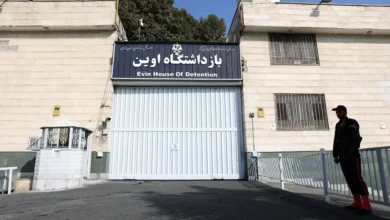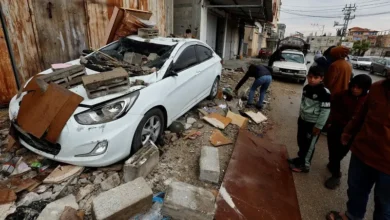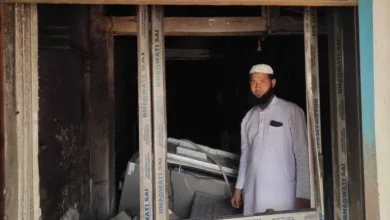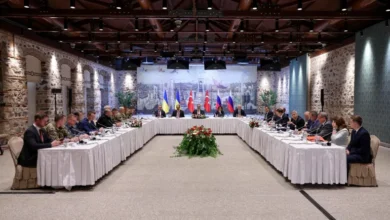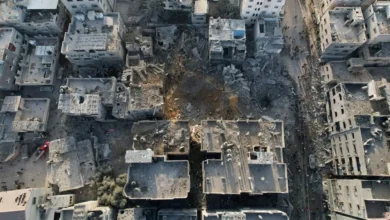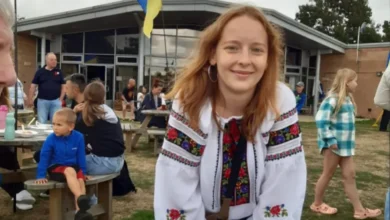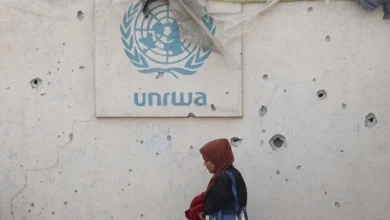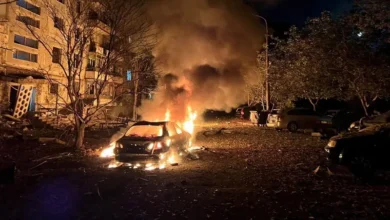A year after Johannesburg building fire, survivors feel abandoned by city
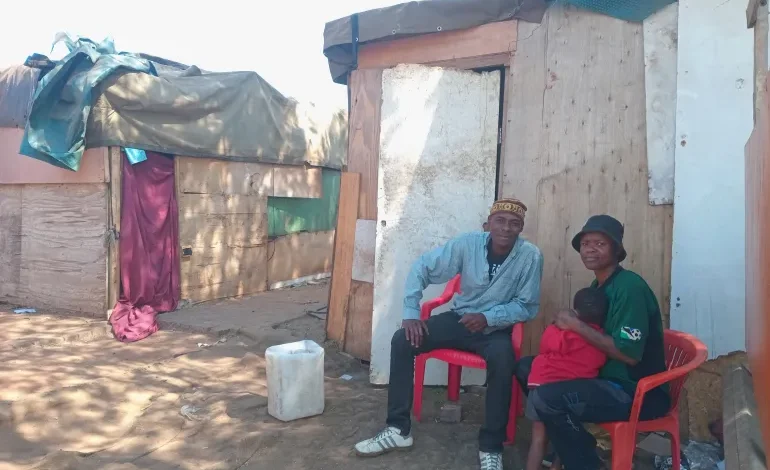
Sibongile Majavava sits outside her small tent shack at the Wembley stadium homeless shelter on the eastern outskirts of Johannesburg, her third temporary home since a deadly fire tore through the building she was living in a year ago.
The 34-year-old South African, her Tanzanian partner, Muhdi, 36 and their toddler have been hoping to get back on their feet since the August 2023 blaze in the dilapidated Usindiso building in the inner city killed 76 people and left hundreds homeless.
But a year later, surrounded by tents and makeshift dwellings in the former sports stadium-turned-shelter, the couple feel hopeless and abandoned by those they thought would help them.
“Life here is very hard,” said Majavava, who has no income and worries about keeping track of her three-year-old because of crime at the shelter. She needs to buy the child shoes, she said, because of used drug needles and other dangerous rubbish lying on the ground.
In 2018, the government installed container homes, water, electricity and standalone ablution units at Wembley, which also houses survivors of the 2017 Cape York building fire and people the city evicted from a derelict building called Fattis Mansions.
Building fires have become common in downtown Johannesburg where hundreds of what city officials call “hijacked” buildings have been taken over by criminal cartels. These gangs partition off rooms and rent them out illegally to poor and desperate people – while offering no services like functioning water, electricity or sewage, which creates unsafe living conditions.
Usindiso was in a similar state by the time the deadly fire happened last August, with a commission of inquiry into the blaze finding that it housed 200 shacks “partitioned with highly flammable material” (PDF).
The commission’s report, released in May, found the City of Johannesburg liable for neglecting Usindiso as well as 200 other buildings in a similar state of dilapidation in Johannesburg.
The city has ‘failed’
“The city has failed to fulfil its constitutional obligation to provide decent housing,” said Siyabonga Mahlangu, a representative for the Inner City Federation (ICF), an advocacy group fighting evictions in Johannesburg.
Six years since the first residents were moved there, in what was supposed to be a temporary arrangement, people feel forgotten.
“The conditions at Wembley are not good at all,” Mahlangu said, likening the tents to living on the street.
Wembley itself is dusty with heaps of rubbish beside the makeshift homes. Young men, most unemployed, drink alcohol in the middle of the day while playing loud music as several children run around. A previous count by the city put the number of people living there at about 500.
Mahlangu said since the first evictees from hijacked inner-city buildings were relocated to Wembley in 2017, the shelter has not been maintained and residents are terrorised by crime.
Yet, “the city acts like they are doing them a favour” by letting them stay there, he told Al Jazeera.
Edward Molopi, a senior advocate at legal rights group the Socio-Economic Rights Institute (SERI), which assists people facing eviction, said the crisis is part of a broader conversation about the city’s responsibility to provide alternative housing for people it displaces.
“According to law, if eviction is going to end up in homelessness, the city is supposed to provide alternative accommodation,” he told Al Jazeera, referencing an older ruling by the Constitutional Court.
Although the municipality provided the relocation site, it “has failed to maintain and upkeep the premises”, he said.
Responding to Al Jazeera’s request for comment, Sibonelo Mtshali, the spokesperson for the City of Johannesburg’s human settlements department, said a member of the mayoral office was “still reviewing the situation at Usindiso building and homeless shelters since he recently took office this August”.
Multiple moves
Usindiso had a long and tragic history even before the 2023 blaze. The five-storey office block initially housed the city’s Pass Office under apartheid, where Black people would apply for documents allowing them to work in the segregated, white-run city.
After apartheid, it was converted to a shelter for abused women and children. But years later, when the nonprofit based there ran out of funding, it was hijacked by a cartel which let it fall into disrepair until it caught fire last August.
The official death toll announced during the inquiry found that the blaze killed 20 South Africans, 23 Malawians, six Zimbabweans, four Mozambicans, and four Tanzanians; 19 others remain unidentified.
After the disaster, officials identified 99 South African survivors and 78 undocumented foreign nationals. Many of those living in hijacked buildings in the inner city are poor migrants who move to Johannesburg to find work and a better life.
Just after the fire, some foreigners who survived did not make themselves known to authorities for fear of being arrested, and many are now living in the streets, under bridges, or in other unsafe abandoned buildings, according to local media reports.
Majavava and her family joined the identified survivors the city first relocated to Hofland Park Recreation Centre in a suburb east of Johannesburg.
